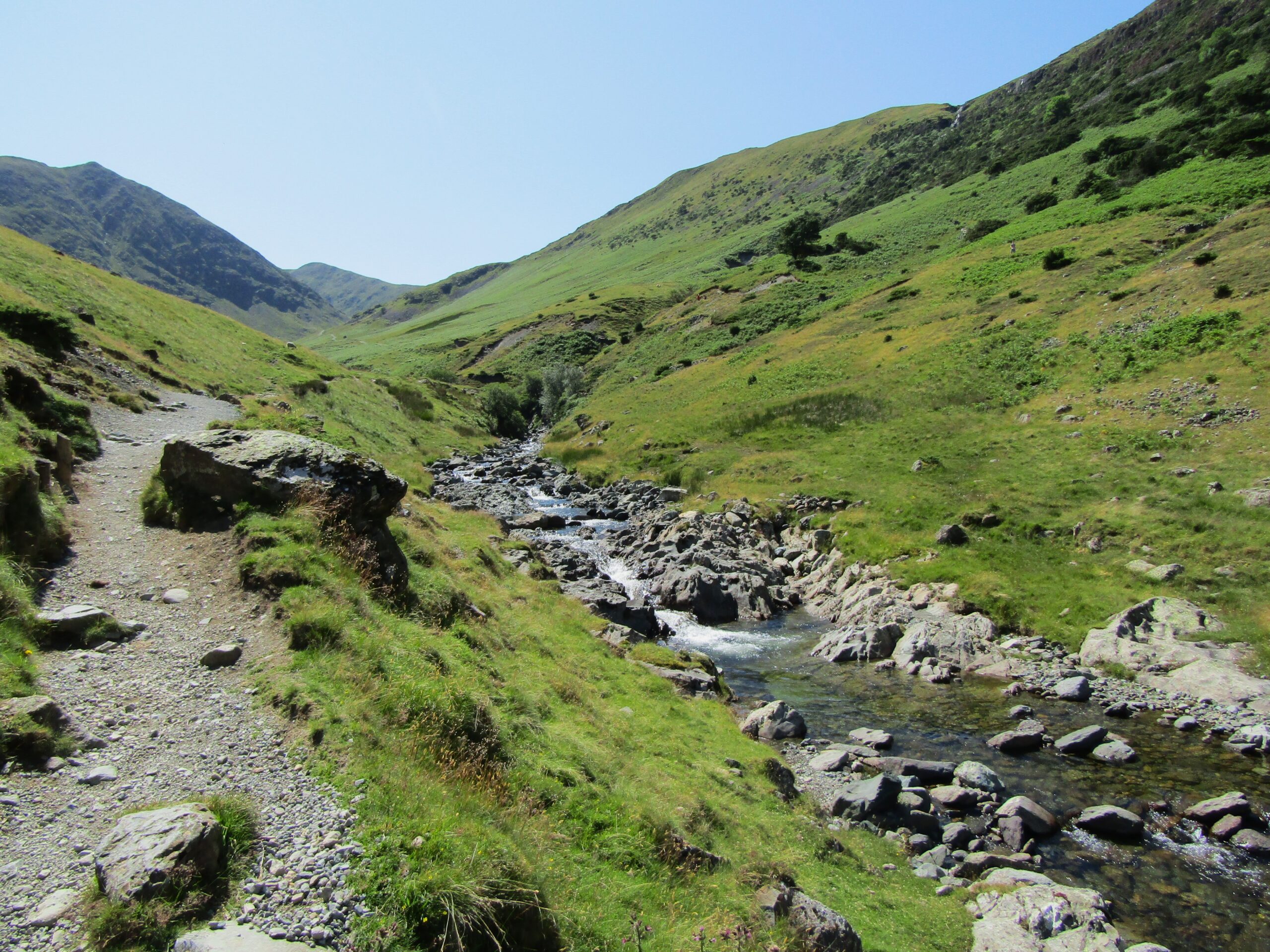Hiking in the Lake District: Helvellyn
Recommendation
When I told a friend I was going to the Lake District, he recommended I hike up to Helvellyn. He accurately described it as having great views, which I wholeheartedly agree with, having now completed it. Yet he failed to mention Striding Edge – a narrow, stony ridge near the summit – which is tricky, to say the least.
The hike as a whole is challenging because of the inclines involved. And Striding Edge does make it potentially dangerous, especially if you were to encounter it in extreme weather. For those with a fear of heights, another route avoids the edge, and still offers great views. So, Helvellyn is accessible for hikers with a reasonable level of fitness and is a great day-hike to immerse yourself into the stunning landscape of the Lake District.
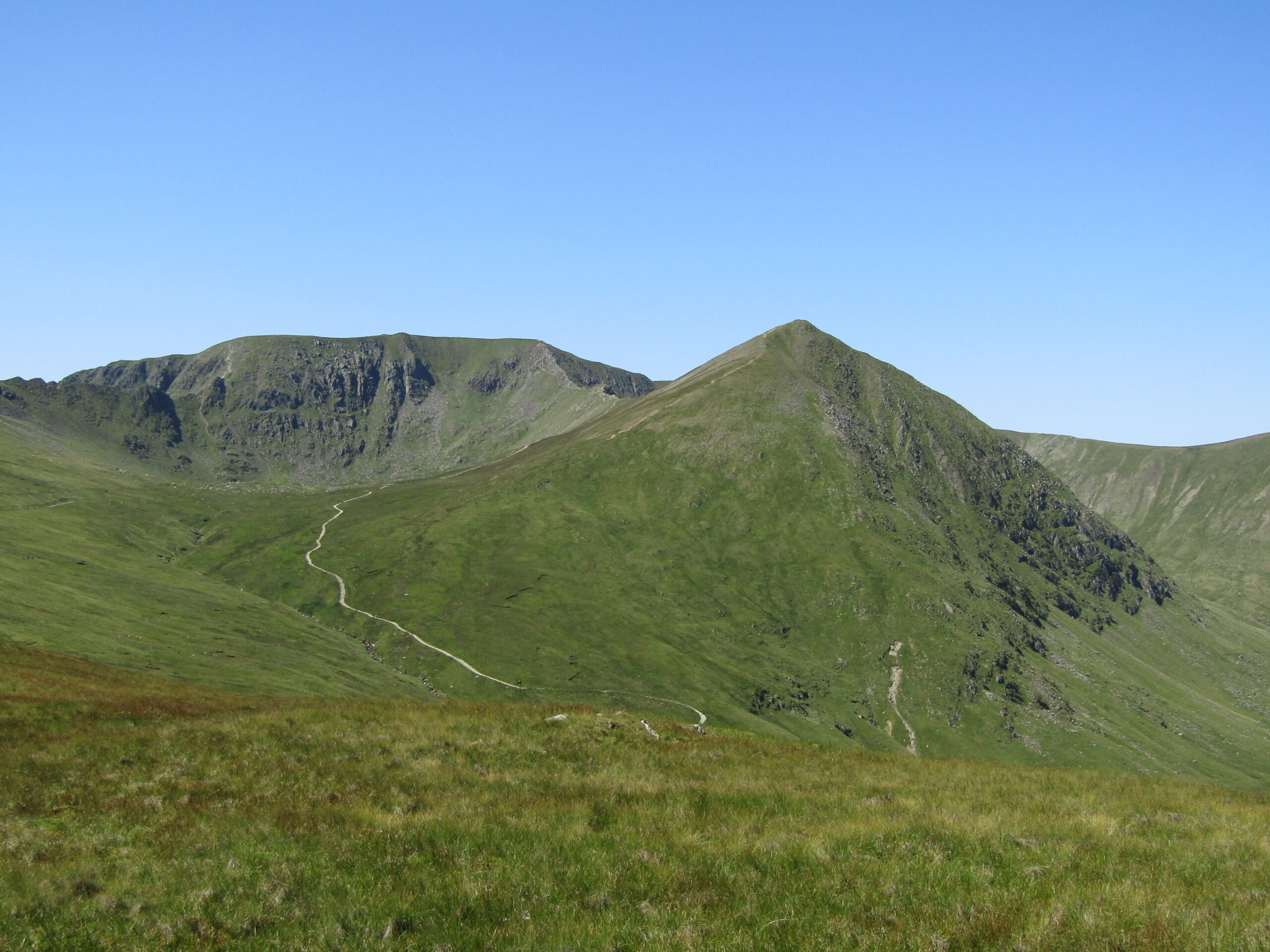
The start
The hike starts at the village of Glenridding, on the edge of Ullswater – the second largest lake in the district. Nearby is a short hike to Aira Force Waterfall, a gentle walk I used as a warmup that morning. It gave my first sighting of the rare red squirrel – The Lake District is one of the last refuges in the UK.
I had the good fortune of clear skies for the day, in what is one of the wettest parts of England. There isn’t a nice way to describe the start of the hike to Helvellyn, other than to tell it as it is. Tough. The path ascends at a steady rate for nearly two miles, on a demanding route. The total elevation on the entire hike was over 1,000 metres – over half of that was on this first slog.
Through fields of sheep, along a dry-stone wall, I climbed. I took heart from the obvious rewards – the views improved on each step, as the elevation allowed expansive views over the area – not least back towards Ullswater, that lay between two slopes.
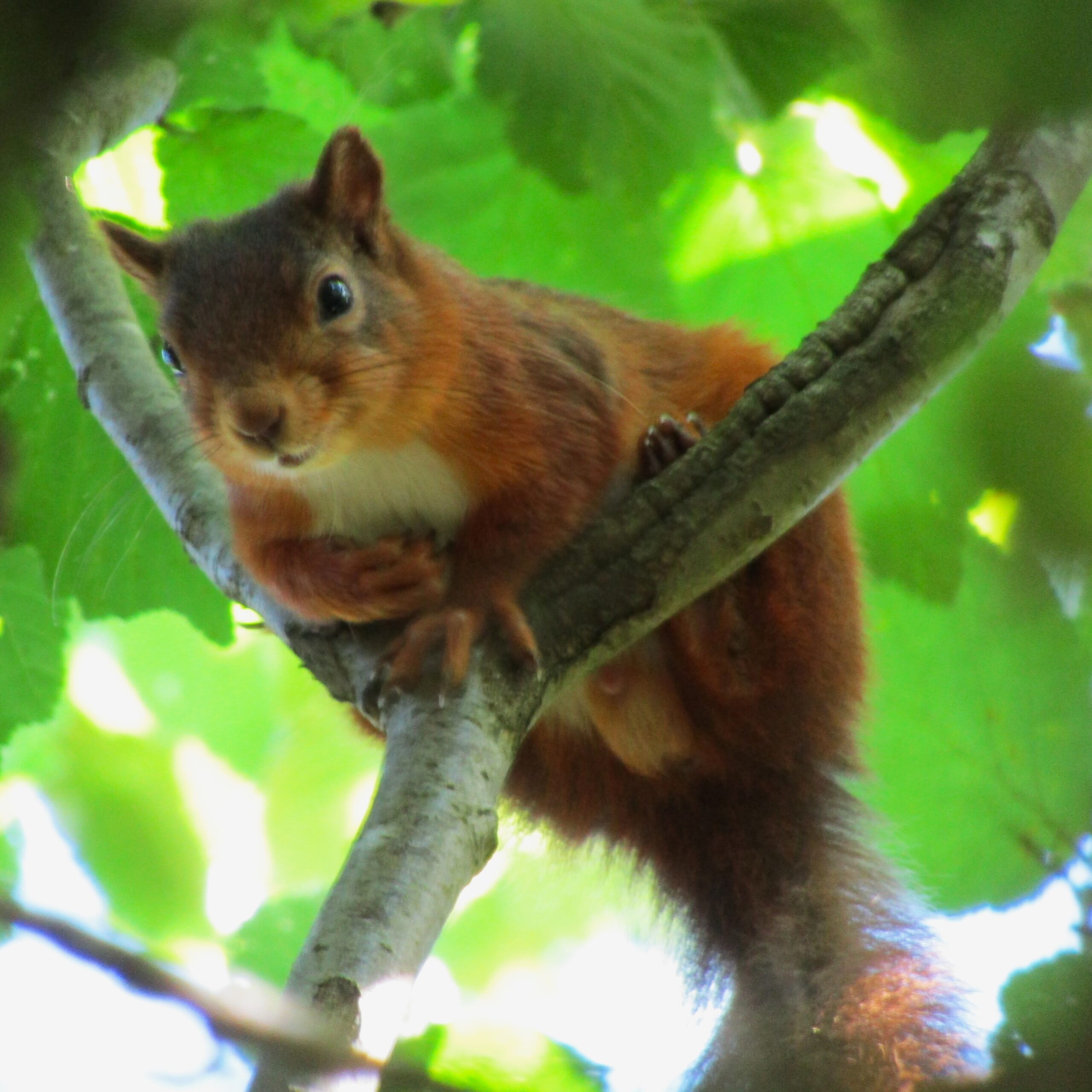
Striding Edge
The path levelled out for a moment, before a couple of short, steep inclines brought me to Striding Edge. Striding Edge is the pinnacle of two sleep slopes that meet to create a rocky formation on top. It is a stunning vantage point. To one side is a small lake sitting below the peak. To the other, there is a wide opening lined by jagged cliffs, creating a cauldron below.
To pass required concentration and dexterity. I needed to use both hands and feet to navigate across the stone. This section was more of a scramble than a hike. If all that wasn’t tricky enough, it was only a short fall either side to almost certain death.
I do believe its worth being cautious and not to take risks. Depending on ability and confidence, plus calm weather, I can vouch for it being an enjoyable thrill. I didn’t bemoan my friend for not disclosing the obstacle – at least, not after I made it across.

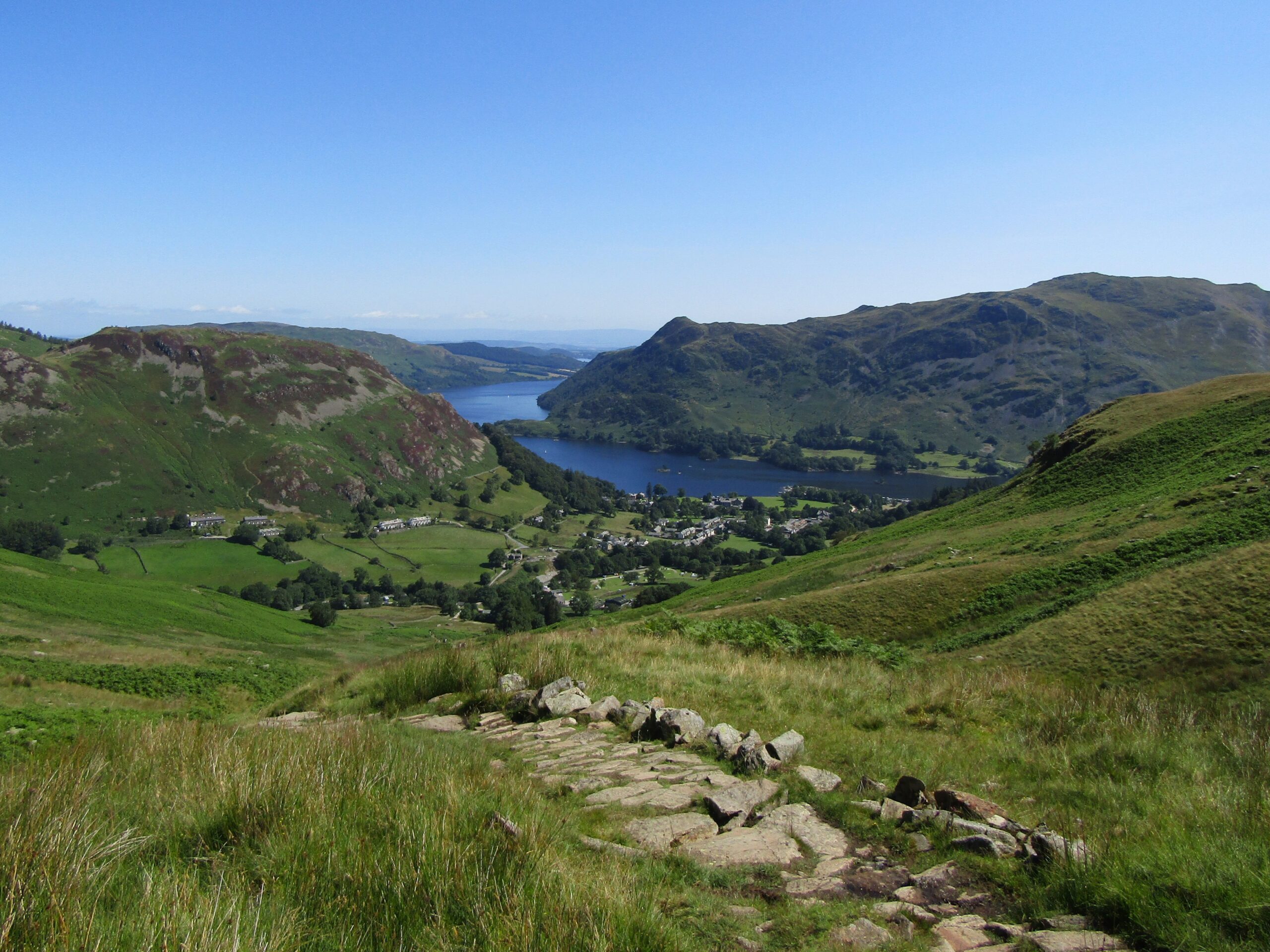
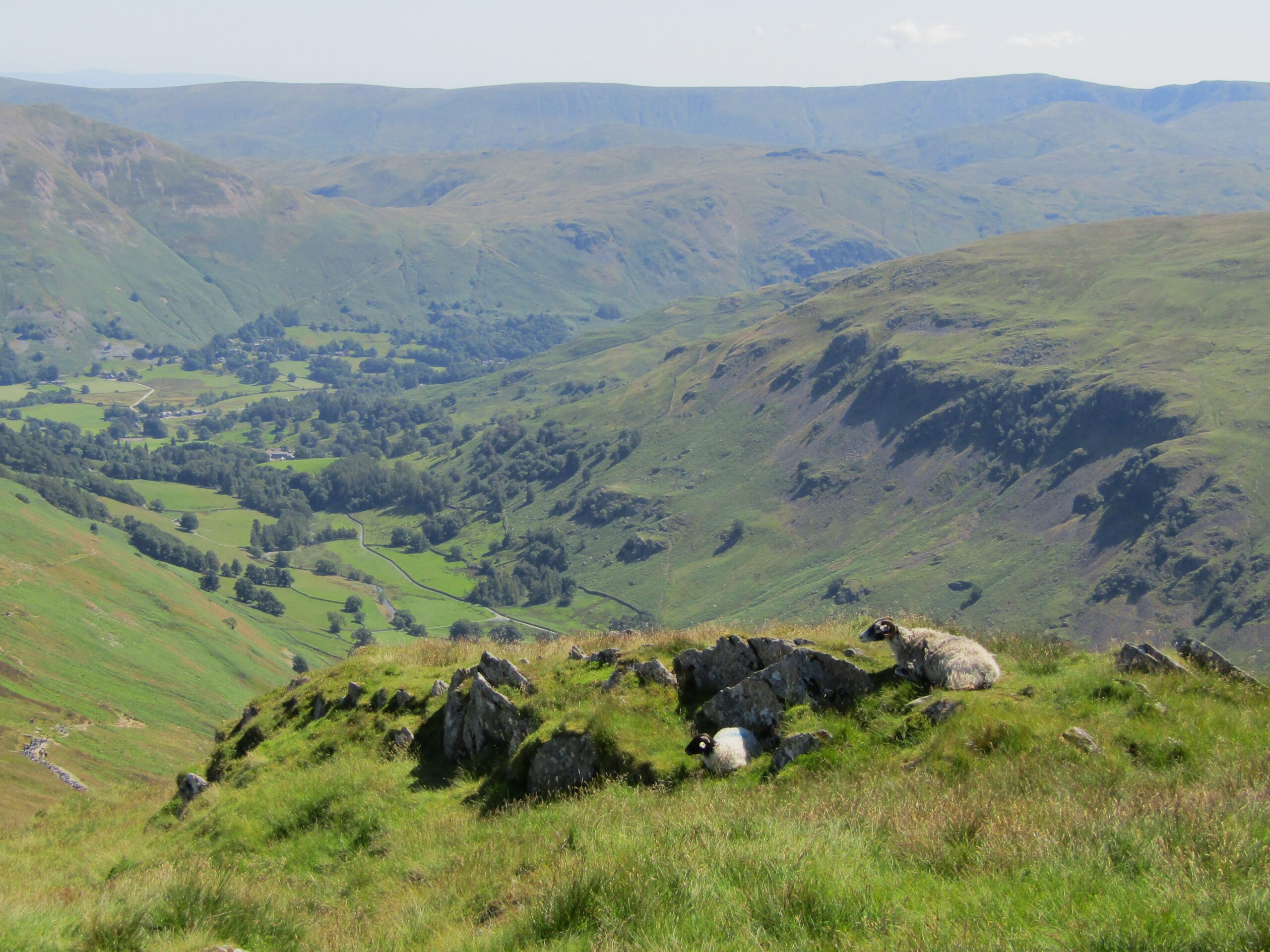
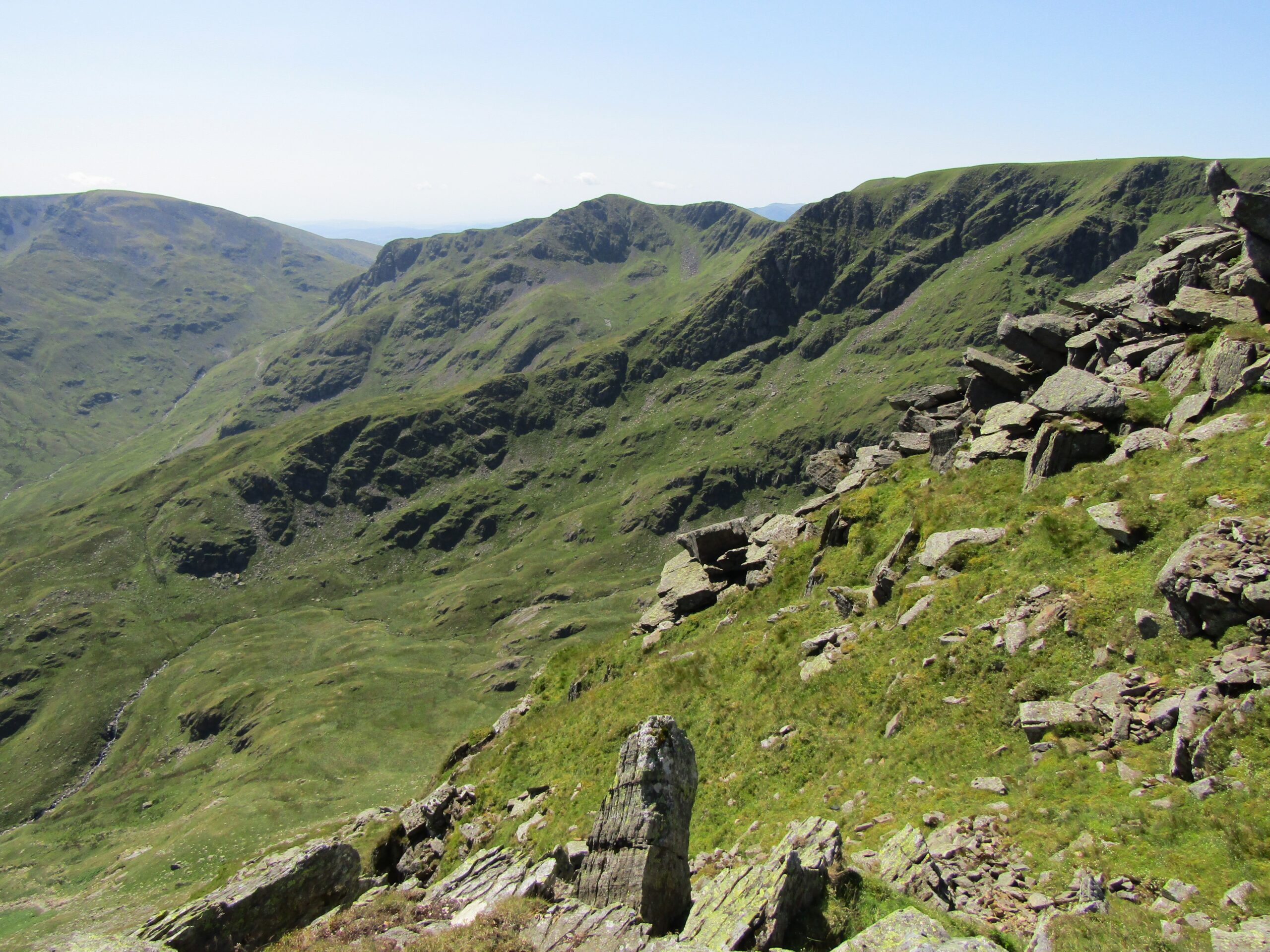
To the top
After Striding Edge, rocky steps lead up to the peak. Once there, the view is outstanding. I stood high above the lake that is cradled in the mountainside, and looking back over the path I had travelled lay Ullswater – beyond more ridges and hills – in the distance.
There is a crossroad near the top. To the right, the path circles the summit and then heads back down. Straight on, the path continues up onto a plateau that sits high in the sky. I decided to extend the hike and strolled over the grassy plains. Walking on the elevated plateau, and without protection from the mountainside, I could now feel the full force of the wind.
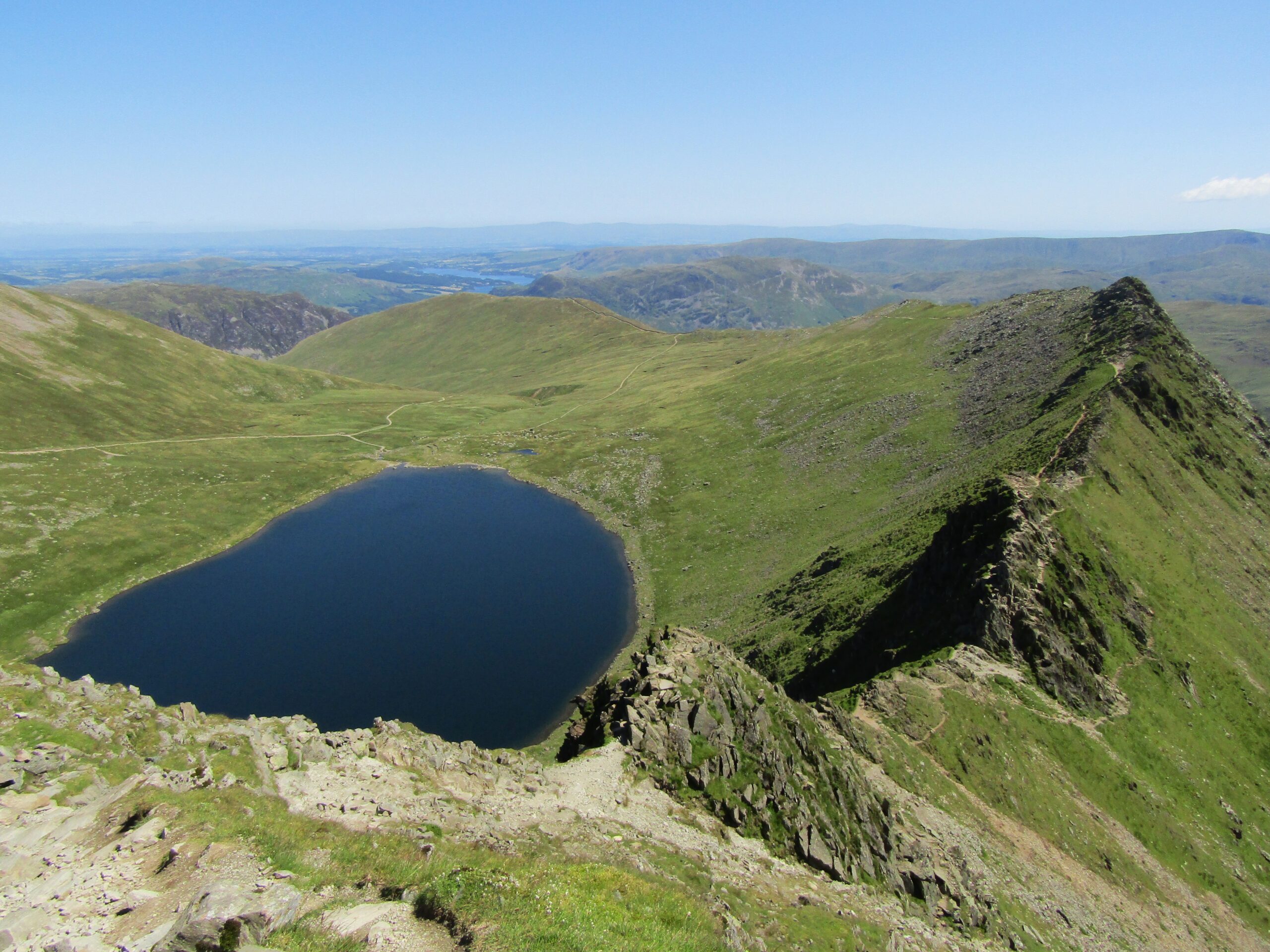
High in the sky
I now had an unobstructed sight across to the centre of the Lake District. I could appreciate how vast this wilderness is. I could also imagine opportunities for multi-day hikes, up and down the countless peaks and valleys. Alas, I only had provisions for a few hours. I did a quick one-mile loop south, above Thirlmere Lake to the west – a lovely setting of water and forest in the valley below.
I stopped for lunch close to the peak of Helvellyn, finding a bit of shelter next to large rocks. I then began the descent down. The trail twists down and around the slopes, with a few steep sections that were tough on the knees. The descent was much less demanding, yet I still felt the exertion from the ascent, as well as the hours spent under the sun.
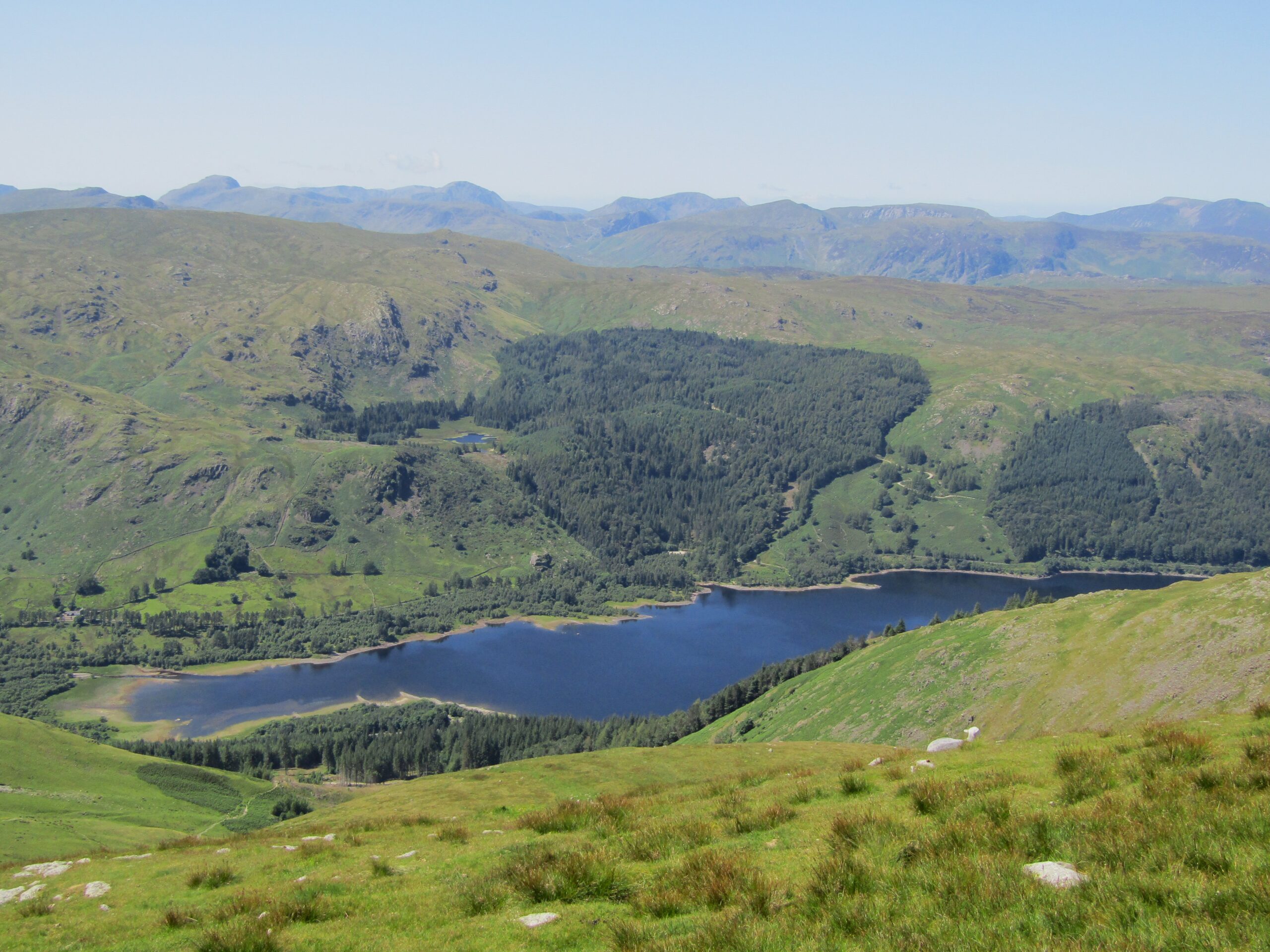
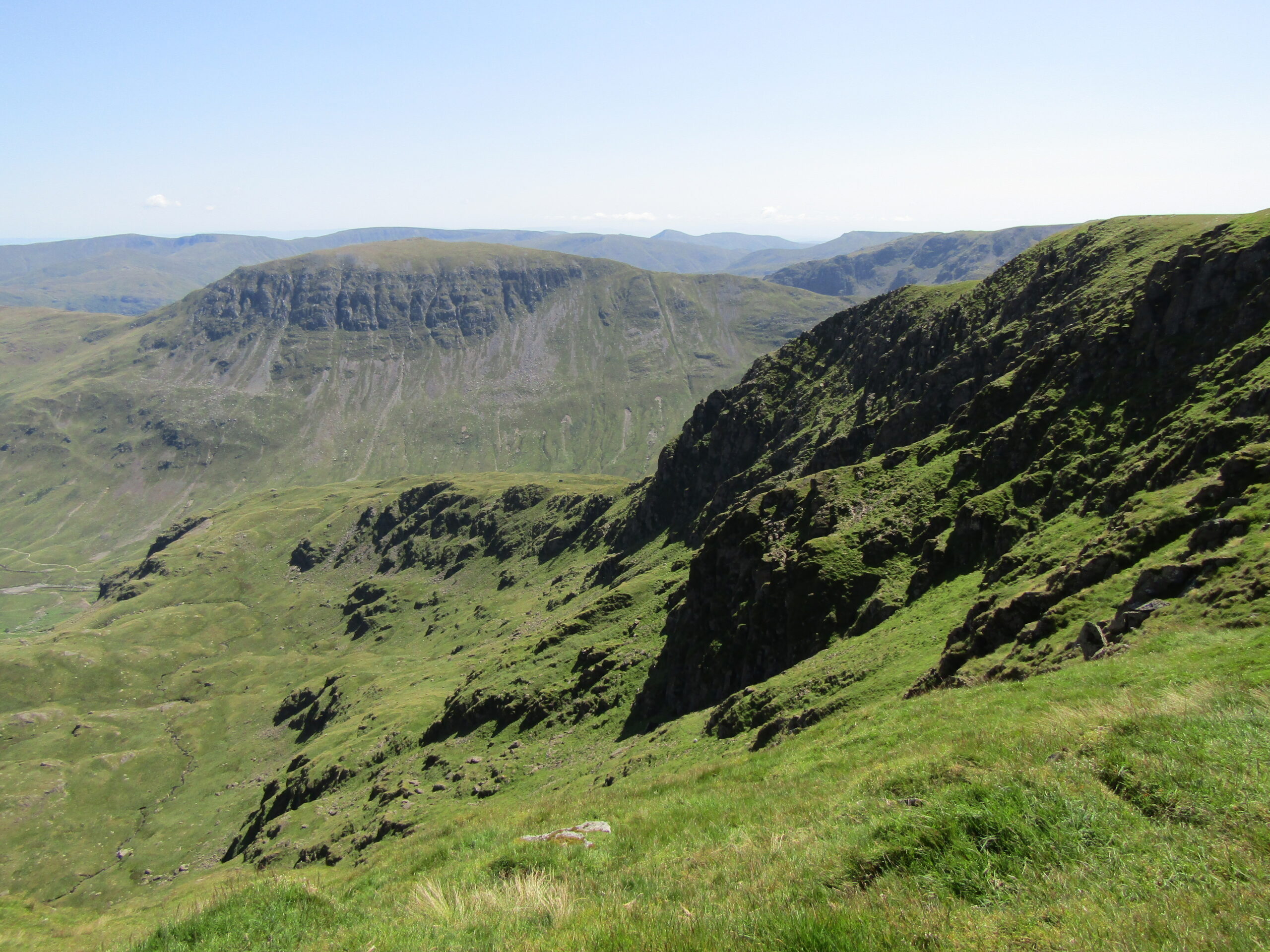
Heading back
Large parts of the return were on moderate slopes – a mixture of dusty, stony paths, plus some grassy sections. There were a few nice sights to appreciate on the way down, too. A gentle stream followed the path for around a kilometre. Then, towards the end, I enjoyed looking back at the heights I had just conquered.
At a total of ten and a half miles (17km), and a total walking time slightly over four hours, the hike was a decent effort. I can endorse its reputation as a popular single-day hike. It’s accessible yet challenging, with a varied landscape to traverse, and offers very rewarding viewpoints.
